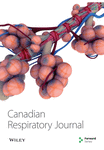Comparison of Budesonide Turbuhaler with Budesonide Aqua in the Treatment of Seasonal Allergic Rhinitis
Abstract
OBJECTIVE: To compare the effect of budesonide Turbuhaler 400 µg/day with budesonide aqua 256 µg/day in the treatment of seasonal allergic rhinitis (SAR). Secondarily to ascertain patients′ preferences for the two nasal devices and to assess quality of life.
DESIGN: Randomized, multicentre, double-blind, double- dummy, parallel groups study.
SETTING: Private practices and hospital clinics in Ontario, Quebec and Manitoba.
POPULATION: Two hundred and eighty-four out-patients with SAR, who were symptomatic during the ragweed season, volunteered for enrolment (243 randomized).
RESULTS: Mean daily nasal symptom scores were significantly reduced with treatment. There were no statistically significant changes from baseline for eye symptoms. Most patients (more than 80%) achieved substantial control of their symptoms with budesonide. The most common nasal and non-nasal adverse events for both groups were epistaxis and headache. Turbuhaler was easier to use and more convenient to carry, had less of an unpleasant taste, and caused less nasal irritation than the aqua spray. More than twice as many patients preferred Turbuhaler to the aqua spray (69% versus 31%). Improvement in quality of life from baseline to clinic visits was statistically significant in both groups.
CONCLUSION: Once daily use of 256 mg of budesonide aqua and 400 mg of budesonide Turbuhaler are equally safe and efficacious in the treatment of SAR. Patients preferred the budesonide powder formulation delivered via Turbuhaler two to one over the aqua formulation.




